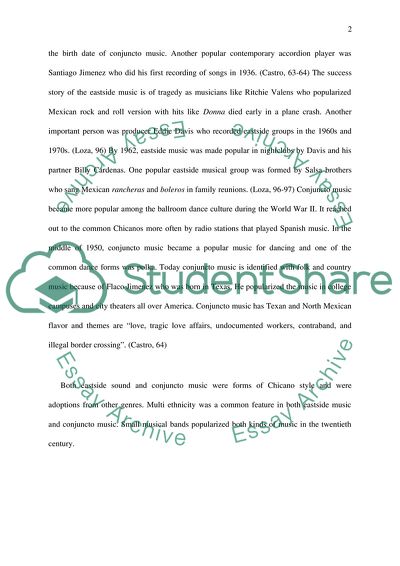Cite this document
(Eastside Sound and Conjunto Music in Chicano Culture Assignment, n.d.)
Eastside Sound and Conjunto Music in Chicano Culture Assignment. https://studentshare.org/music/1596947-chicano-culture
Eastside Sound and Conjunto Music in Chicano Culture Assignment. https://studentshare.org/music/1596947-chicano-culture
(Eastside Sound and Conjunto Music in Chicano Culture Assignment)
Eastside Sound and Conjunto Music in Chicano Culture Assignment. https://studentshare.org/music/1596947-chicano-culture.
Eastside Sound and Conjunto Music in Chicano Culture Assignment. https://studentshare.org/music/1596947-chicano-culture.
“Eastside Sound and Conjunto Music in Chicano Culture Assignment”. https://studentshare.org/music/1596947-chicano-culture.


